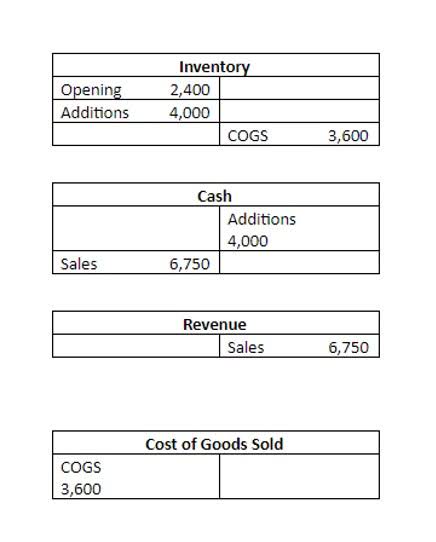
Consider Innovate Manufacturing Inc., which paid taxes of $200,000 per year in 2020, 2021, and 2022. Accounting Errors They now realize they had qualified R&D projects in those years which could have yielded credits. They perform an R&D study and find $150,000 of total credits across the three years. By amending those returns, they get approximately $150,000 back (plus interest) from the IRS – real cash that drops into their bank account.
- In other words, a startup that spent $1,000,000 on R&D could claim a maximum of $60,000 in its first year.
- In 2017, Congress created a tax bill that required amortization of R&D costs beginning January 1, 2022.
- It’s important to work with a company that understands how the R&D tax credit in southern California differs from that in other states.
- The revenues from payroll taxes are used to fund public programs; as such, the funds collected go directly to those programs instead of the Internal Revenue Service (IRS).
- Some retailers ask you to bring the battery to a local branch though the sale started on a website, simply because they cannot accept loose hazardous parcels at a warehouse that lacks hazmat handling staff.
R&D Credit Carryforward FAQ
Payroll taxes are taxes on an employee’s gross salary. The revenues from payroll taxes are used to fund public programs; as such, the funds collected go directly to those programs instead of the Internal Revenue Service (IRS). The federal carryforward period is 20 years; however, state carryforward periods largely depends on where you are based. Many states simply mirror the 20-year period mandated by the Federal government.
Revised IRS Procedural Guidance Released

107–16, set out as a note under section 38 of this title. (4) which related to 5-year carryback for eligible small business credits. The entire amount of the unused credit for an unused credit year shall be carried to the earliest of the 21 taxable years to which (by reason of paragraph (1)) such credit may be carried. The amount of pre-change losses available under the annual Sec. 382 limitation equals the value of the old loss corporation immediately before the ownership change multiplied by the federal long-term tax-exempt rate. Sec. 382(k)(1) defines a loss corporation as a corporation entitled to use an NOL carryover or having an NOL for the tax year in which the ownership change occurs.

Frequently asked questions about the R&D tax credit carryforward
Often because of confusion about rules or fear that it’s too complex. In the sections ahead, we demystify the rules, including the all-important question of expiration, so you can confidently capture this benefit for your business. Borge, 405 F.2d 673 (2d Cir. 1968), concerned entertainer Victor Borge’s conduct of a poultry business. For several years, the unincorporated poultry business lost money that Borge offset against his entertainment income.

Now, let’s get to the heart of the matter – examples of activities that actually qualify, so you can see how this applies in real life. Again, as a dollar-for-dollar credit against taxes owed or paid, it also is, in some cases, available at the what is r&d tax credit state level, allowing for an even bigger benefit. Haven specializes in finding and maximizing R&D tax credits for startups. Our services help reduce the financial burden of R&D costs, allowing innovators to focus on creating their products and improving the world.
California R&D Tax Credit
- Condition plays a large part in whether new car batteries are returnable.
- This makes R&D credits more valuable, particularly for high-growth tech and SaaS startups with significant net operating losses.
- For companies in their early stages of growth or those investing significantly in R&D but not yet realizing significant profits, the ability to carry forward unused R&D tax credits provides flexibility and financial relief.
- Information may be aggregated as described in FAQ 11 but must identify the specific number of individuals and each individual’s title or position.
- The language of Sec. 196(b) does not reasonably contemplate this unnecessarily complicated circular computation.
- The IRS can audit those credits starting in 2027, and under normal circumstances, they have three years from the date you file to do so.
Typically, this is about three years, although it may be longer if you sustain losses. New businesses that don’t have three years of expenses to calculate a credit base can multiply the year’s R&D expenses by 6%. The process is simple but requires you to understand which expenses qualify and to have documentation to submit as proof.
- As a result, where the taxpayer’s loss in the activity is limited by the at-risk rules, if the taxpayer has sufficient passive income from other activities, the credits could be used.
- In addition to reducing income tax, R&D Tax Credits can be used to offset a company’s portion of its payroll taxes.
- Many states follow the federal 20-year standard, but others allow shorter periods like 5, 10, or 15 years.
- That cash does not come from a store core account, yet it still rewards the step of keeping lead out of landfills.
- These two terms refer to the federal benefit outlined in Section 41 of the Internal Revenue Code.
- For provisions that nothing in amendment by section 11801(a)(2) of Pub.
- The invitation to contact the firm and its lawyers is not to be construed as a solicitation for legal work.

Talk to your engineers, production staff, and developers about the problems they’re solving. Then connect with an R&D tax credit specialist who can evaluate whether that work qualifies. Most reputable firms charge a percentage of credits identified (typically 20-30%).
- This ensures you capture the credit each year on the original return (so you hopefully won’t need major amendments in the future).
- That route takes time, so expect some delay before any refund or credit arrives.
- Each scenario includes a quick 2-column table of typical expenses to show what counts as a QRE (Qualified Research Expense) and what doesn’t.
- For instance, IRC Section 38(c) limits how much of your tax liability can be offset using general business credits.
- Will using R&D credit carryforwards trigger an audit?
The Key Benefits of R&D Tax Credit for Startups
Understanding the basics of the R&D tax credit is the first step to not leaving free money on the table and staying competitive in your field. The research and development credit encourages companies to innovate and invest in new products and processes. A key advantage of R&D tax credit carryforward is that it benefits businesses both now and in future fiscal years because of the 20-year eligibility period. The immediate cash flow it offers is especially useful for small businesses. https://www.bookstime.com/ Before diving deeper, remember that to actually use a carryforward, you must claim the credit on your tax return.
